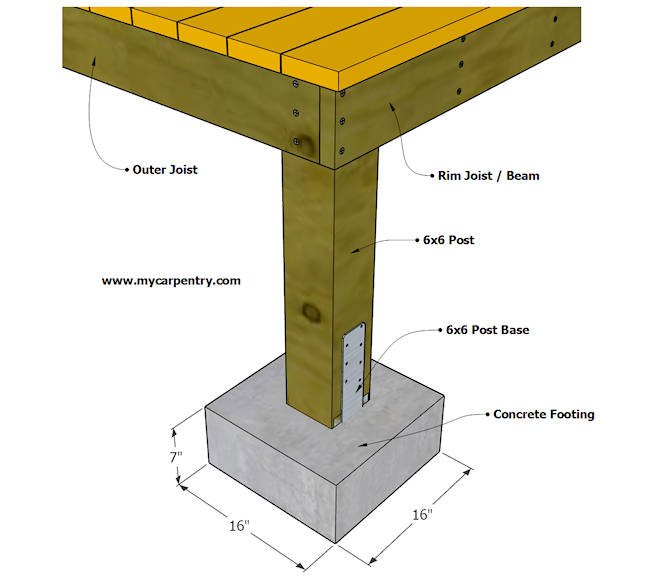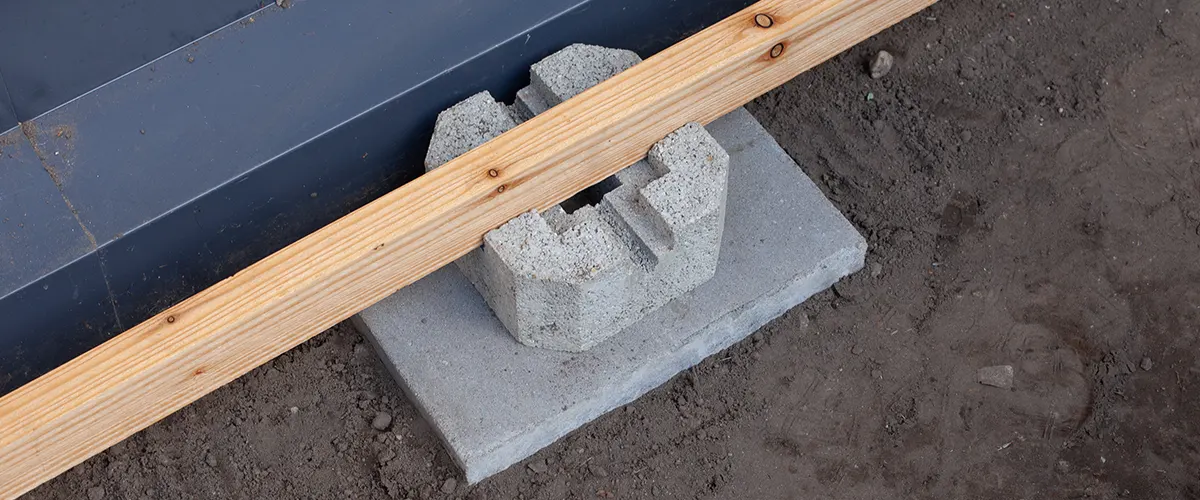Step-by-Step Deck Quality: Ensuring Security with Properly Mounted Deck Footings
Step-by-Step Deck Quality: Ensuring Security with Properly Mounted Deck Footings
Blog Article
Picking the Right Deck Footings for Stability and Resilience
When it pertains to developing a deck, one of one of the most essential choices you will make is picking the ideal footings for security and toughness. The durability and safety of your deck depend greatly on the sort of grounds you choose, as they provide the crucial support and stability to hold up against the test of time. With a myriad of alternatives offered, it can be frustrating to identify which grounds are best fit for your particular demands. In this discussion, we will certainly discover the numerous kinds of deck footings, think about the important aspects to evaluate when choosing, and delve right into the pros and cons of various options. By the end, you will certainly have a clearer understanding of the options handy and be better outfitted to make an informed choice for your deck project.
Sorts Of Deck Footings
There are several types of deck footings that can be utilized, each offering one-of-a-kind advantages and considerations. One common kind of footing is the concrete pier footing. These footings contain a round opening filled with concrete, which offers a solid structure for the deck articles. Concrete pier grounds are reasonably very easy to mount and offer outstanding security, making them a prominent option for several deck tasks.
These footings are installed by screwing them right into the ground, which produces a safe foundation for the deck. They additionally enable for simple change and leveling of the deck if needed.
Conversely, some building contractors go with precast concrete footings. These footings are constructed from long lasting concrete and be available in various forms and dimensions to accommodate different deck layouts. Precast concrete footings are hassle-free to set up and offer a secure base for the deck structure.
Ultimately, one more option is the post-in-anchor footing system. This sort of ground involves driving a steel anchor into the ground and attaching it to the deck blog post. It provides flexibility in regards to positioning the deck articles and is appropriate for decks with lightweight frameworks.
When choosing the ideal sort of deck footing, it is important to consider aspects such as dirt conditions, deck lots, and local building ordinance (Deck Footings). Consulting with a professional service provider or structural engineer can aid ensure the suitable ground is chosen for a stable and risk-free deck
Aspects to Consider When Selecting Grounds
When selecting the suitable grounds for a deck, it is critical to very carefully take into consideration different aspects such as dirt problems, deck lots, and adherence to regional building regulations. These variables play a significant role in making sure the stability and sturdiness of the deck framework.
The type of dirt on which the deck will be constructed identifies the type of footings needed. On the various other hand, decks constructed on clay or expansive soils may require footings that can fit the soil's propensity to broaden and contract.
Another essential factor is the deck load. The weight of the deck, consisting of the products utilized and any kind of possible online lots such as furnishings or gatherings, need to be taken into consideration when picking footings. The footings need to be made to birth the weight of the deck and distribute it uniformly to avoid any type of structural problems or failures.
Lastly, adherence to regional building regulations is critical. Structure codes differ from area to region, and it is vital to follow the specific requirements established by the neighborhood authorities. Deck Footings. These codes make certain that the deck is constructed safely and meets the necessary requirements for structural integrity and load-bearing capability
Concrete Grounds: Benefits And Drawbacks

Concrete footings use several benefits and negative aspects when made use of as the foundation for a deck. On the silver lining, concrete grounds supply superb stability and longevity. Concrete is a stiff and solid product that can support hefty tons and endure various climate condition. It also has a lengthy life-span, making it a reliable option for long-term usage.
An additional benefit of concrete grounds is their adaptability. They can be put right into various forms and dimensions to fit different deck layouts and configurations. Concrete grounds can be tailored to fit the details demands and needs of the deck framework.
Nonetheless, there are additionally some disadvantages to utilizing concrete footings. This can Visit Website increase the total price of the deck job and may call for expert assistance.

Helical Piers Vs. Sonotubes: Which Is Much better?
In considering the foundation options for a deck, the contrast in between helical piers and sonotubes is critical in establishing the remarkable selection. They are turned into the ground using hydraulic machinery, providing a secure and durable structure for the deck.
When it pertains to security and longevity, helical piers have the top hand. The helical plates on the piers develop a solid hold with the soil, shifting or preventing any motion of the deck. This is particularly useful in areas with unstable or changing dirt conditions. Sonotubes, on the various other hand, depend solely on the concrete filling up for stability, which might not provide the same degree of strength and resistance.
In terms of installment, helical piers are relatively less complicated and faster to set up contrasted to sonotubes. The hydraulic machinery made use of to twist the piers right into the ground makes certain a quick and reliable procedure. Sonotubes, on the other hand, need excavating holes and pouring concrete, which can be labor-intensive and time-consuming.
In addition, helical piers are an even more flexible alternative. They can be used in different dirt problems and can be adjusted or reinforced if required. Sonotubes, on the other hand, might call for additional support, such as rebar, in certain soil conditions or locations with high lots requirements.
Choosing the Right Footings for Your Deck's Measurements
For ideal architectural integrity, it is vital to thoroughly choose the ideal grounds that align with the measurements of your deck. The dimensions of your deck, including its length, width, and height, play a substantial role in establishing the kind and size of footings called for.
When choosing grounds for your deck, it is essential to consider the load-bearing capability of the soil. click here for info The weight of the deck, integrated with the weight of any kind of furnishings or people on it, puts in a additional info considerable force on the footings (Deck Footings). As a result, it is vital to pick grounds that can appropriately sustain this weight without sinking or moving in time.
Bigger decks with greater measurements require bigger grounds to provide adequate stability and assistance. The shape of the footings, whether they are rounded or square, depends on the design and design of the deck.
Conclusion
In verdict, selecting the best deck grounds is essential for ensuring security and toughness. Elements such as the kind of grounds, the deck's dimensions, and the benefits and drawbacks of various alternatives must be considered. Concrete grounds provide toughness and longevity, however may be a lot more pricey and taxing to mount. Helical piers and sonotubes have their own benefits and drawbacks. Inevitably, selecting the ideal footings for your deck's certain needs is vital for a durable and successful framework.
These grounds are composed of a cylindrical hole filled with concrete, which offers a solid foundation for the deck messages. Concrete pier footings are fairly simple to mount and offer outstanding stability, making them a prominent option for lots of deck jobs.
Precast concrete grounds are practical to set up and supply a steady base for the deck framework.
It uses versatility in terms of positioning the deck posts and is suitable for decks with lightweight frameworks.
Concrete grounds supply numerous benefits and disadvantages when used as the foundation for a deck.
Report this page